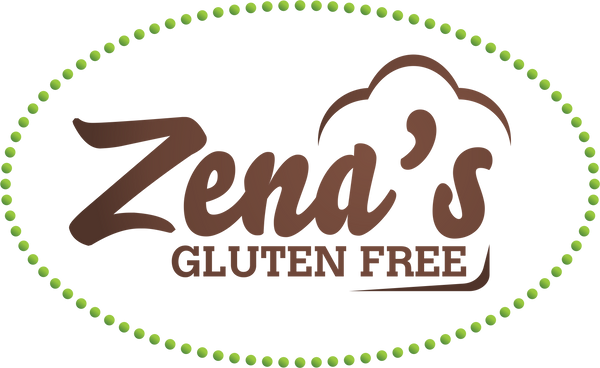gluten free flours
Can that which we call a flour by any other name taste as good? But of course! At Zena’s Gluten Free, a number of flours, most of which are high in nutritive values, are used to produce bread and baked goods that are as good as or better than their wheat counterparts.
zena's all-purpose gluten free flour (zap)
Zena’s All-Purpose Flour is comprised of sorghum and quinoa flours – both high in fibre, iron and protein – as well as tapioca flour. While the starchy flours add little nutritive value, they serve an important supporting role to the stars – quinoa and sorghum. With a little help from the magic of xanthan gum, ZAP can be used at a 1:1 ration for wheat flour. Gluten-free baking at home made easy!
sorghum
Sorghum flour is free of gluten and full of life. At least that’s what the kids are saying.
A whole grain, sorghum is an excellent source of energy, mainly in the form of complex carbohydrate, which is usually slower to digest. It is also high in fibre, iron, protein, calcium and antioxidants. It’s the dietary staple of more than 500 million people in more than 30 countries of the semi-arid topics. Only four other foods – rice, wheat, maize and potatoes – are consumed in greater amounts by the human race.
Sorghum truly is an ancient grain, with reports of remains found in the Nabta Playa archaeological site in the Western Desert, southern Egypt dating back to 8000 B.C.E. Easy to grow, sorghum is among the most efficient crops in conversion of solar energy and use of water. Approximately 7.7 million acres of sorghum were planted in the United States, the largest producer of the grain.
Sorghum is the primary flour in ZAP (Zena’s All-Purpose gluten free flour blend), which is used in all recipes, including breads, pizza crusts, muffins, cookies, biscotti and more.
quinoa
Rich in nutrients, quinoa is commonly considered to be a grain, but is actually the seed of a plant related to beets, chard and spinach. Once regarded as “the gold of the Incas”, quinoa is a complete protein. It includes all nine essential amino acids, including lysine, which is essential for tissue growth and repair.
Quinoa is also rich in history. While relatively new to North America, quinoa has been cultivated in the Andean mountain regions of Bolivia, Chile and Peru for more than 5,000 years. Archeological evidence indicates that wilder variations of quinoa were cultivated in this same region as long ago as 9,000 years.
In the 16th century, Spanish conquerors destroyed the fields in which quinoa was grown. They banned the Incas from growing quinoa because of its association with non-Christian ceremonies. Punishment included sentencing the offenders to death. The Incas were forced to grow corn and potatoes instead. However some wild quinoa continued to grow, allowing for a small amount to be cultivated. Secret quinoa…
Fortunately quinoa made a revival and was imported into North America in the 1970s. While it is grown in some other areas of the world, the majority still comes from the same South American regions from which it originated.
Because quinoa is a very good source of manganese as well as a good source of magnesium, iron, copper and phosphorus, this “grain” may be especially valuable for persons with migraine headaches, diabetes and atherosclerosis.
tapioca flour
Tapioca is another wonderful, starchy gluten free flour with a natural sweetness. Tapioca is used worldwide for thickening, for crackers, and tapioca pearls are found in varying sizes in bubble tea. Many refugees survived on tapioca during the Japanese occupation of Southeast Asia in WWII. Today, Thailand produces most of the world’s tapioca.
xantham gum
Xanthan is believed by Zena to possess magical qualities, for the amazing coaxing effects it has on gluten free flours. While xanthan gum is sometimes derived from wheat, Zena’s sources xanthan from corn or soy. It assists in creating elasticity and rising, when combined with a host of other magical ingredients!
